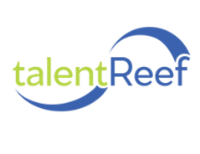
How to get hourly job applicants in a tight labor market
Hiring the hourly workforce has always been a battle. And after more than two years of feeling the effects of the COVID-19 pandemic, nearly every aspect of our lives has been transformed, especially when it comes to running a business. Developing strategies that included social distancing and contactless methods and tactics dominated most service industry businesses.
Today, now that most restrictions are lifted and many of people are getting back to normalcy, the biggest challenge is finding and retaining hourly workers.
There’s no other way to put it: we’re witnessing a severe scarcity of applicants. In February 2022, 4.35 million workers left their jobs, bringing the total number of people who are currently unemployed to 6.27 million. There were 11.27 million openings in February, which slightly down from January, but still means there is a record 5 million more openings than job seekers.
Despite getting creative with perks — like paying candidates just to show up for an interview, signing bonuses, and debt-free degrees — and raising hourly wages, many businesses are still struggling to stay open.
So what’s going on? How can there be so many unemployed workers, yet so many unfilled jobs?
01 Not Being Offered Enough Hours
Many workers are finding openings for 1-2 days a week, but that isn't going to pay their bills or support their families. They are looking for full-time hours with benefits.
02 Covid Health Concerns
Even with vaccinations and the pandemic slowing down, the fear of contracting the coronavirus — and spreading it to their families — continues to discourage large numbers of potential employees from returning to work, especially in public or customer-facing positions. As recently as September 2021, 3 million Americans reported concerns about the virus affecting their job.
03 At-Home Care Is Still Needed
From sporadic quarantines to the cost of child care to being responsible for elderly family members, the uncertainty makes it difficult for many Americans to accept a set schedule. This is why it's even more important for companies to offer flexible schedules when possible.
04 Holding Out for Higher Wages
While many companies have raised their wages in the past two years, potential applicants are still willing to wait for higher wages that allow them to make a living. They also weigh the cost of expenses like child care when deciding if it makes sense to take a job or stay home to take care of their kids.
05 Switching Industries and Careers
Leisure and hospitality workers are quitting at a higher rate than any other industry. Why? Low pay and financial stress, having to work multiple jobs to get by, undesirable working hours that leave little time for friends and family, and burnout. Many workers have taken the opportunity to go back to school and/or change careers completely.
06 Gig Mindset and Flexible Work Schedules
The gig economy was booming pre-pandemic and that mindset has only been reinforced by COVID-19, where individuals place a premium on their time and experiences. Hourly workers seek flexible work schedules as their #1 criteria when considering employment, and many will have two or more jobs to meet this preference. This places additional pressure and complexities on employers to cover shifts.
It's a perfect storm, exacerbated by the fact that service industry businesses around the country are all trying to ramp up at the same time. The reality is, employers whose businesses depend heavily upon hourly workers must be more agile than ever and be willing to adapt their recruiting and retention strategies, now. Fortunately, with the right talent management tech stack that supports very specific best practices, you can position yourself and your business for success. Below are some of the immediate measures you can take to attract, engage, hire, and retain talent during this unprecedented people crisis.
Promote your employer brand and culture
We’ve been hearing about the importance of employer brand for years now but it’s never been more paramount than today in attracting and engaging talent. Your career pages, campaigns, and job descriptions must clearly articulate the steps you’re taking to create a safe and healthy work environment, that you offer flexible work schedules, details of any special compensation/ benefits incentives, information about training and development programs, and your commitment to social responsibility and diversity and inclusion. Incorporate video testimonials from your leadership, store managers, and employees,
and think about creating a micro-site for each store location to really personalize the job seeker experience. The bottom line, be sure to tell your story, your mission, and what sets you apart as employer of choice.
Deliver an applicant experience
built on speed and communication
There’s no way around it, this is a candidate’s market. It’s crucial that you remove any potential
friction from the application and hiring experience, as today’s job seeker will abandon the application and ghost interviews knowing they have an overabundance of options. Implementing a
“fast” application that doesn’t require account creation, offering a text apply option to meet today’s mobile preference, leveraging a simple
yet effective assessment, and automating the interview scheduling process are all key ingredients to beating your competitors to the punch. On top of this, communicating via SMS text with your applicants in real-time throughout the process will keep them engaged and help streamline screening, interviewing, offers, and onboarding.
Tap your employees and talent community
The best applicant sources in today’s climate are right in front of you — employee referrals and talent community. It’s time to get bold and creative with employee referral programs aimed at turning your employees into recruiting ambassadors. Leverage campaign pages to advertise details/incentives
(right down to the location level) and make it easy for employees to share job opportunities with their friends and family members via email and social media. This is a resource that you simply can’t afford to leave untapped. The same holds true for talent community outreach. Create compelling, branded email and SMS text campaigns targeted at past applicants and former employees that live in your CRM, encouraging them to apply/reapply for your open positions. These high-value, low-cost channels can help reduce your job advertising spend, which for many service industry businesses is becoming unsustainable.
Focus on retention
Keeping the employees you currently have is more crucial than ever. This requires that you optimize the employee experience at every
stage across their journey and meet their post-pandemic requirements such as flexible schedules. Implementing an effective, digitized onboarding process is the tip of the spear and must incorporate COVID safety protocols, job training, and immersion into your culture. Post onboarding, you’ll want to ensure you’re delivering continuous communication and recognition to your employees, including making sure they know how their efforts and performance are impacting the success of the business. In addition, you’ll want to create an internal careers page to ensure your current employees are kept informed of opportunities
for career advancement. With the skills shortage
(including a growing market gap in managerial experience), it’s crucial that you develop internal talent to fill these roles. Of course, you’ll need to give serious consideration to your compensation and incentive plans to ensure you stay competitive in this emerging wage war.
Adopting a multi-pronged recruiting and retention strategy that consists of these elements will undoubtedly help you to compete more effectively within these incredibly complex market conditions. We don't know when — if ever — things will get back to "normal" but we do know that companies who implement the strategies we've recommended have seen applicant flow increase by as much as 369%. What could that do for you?







